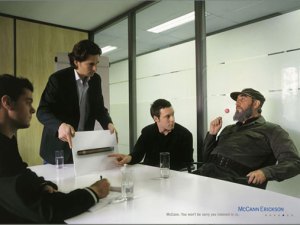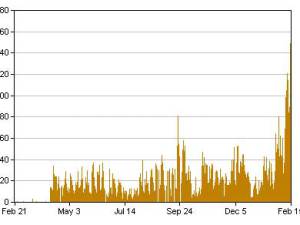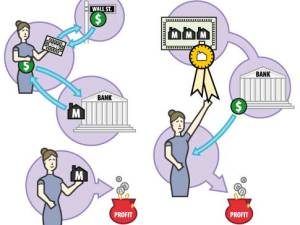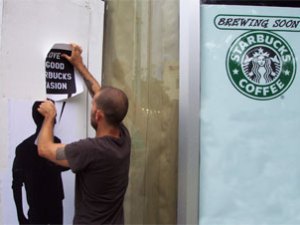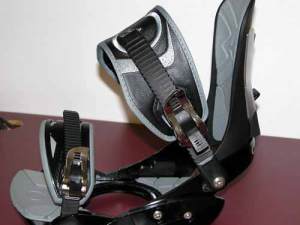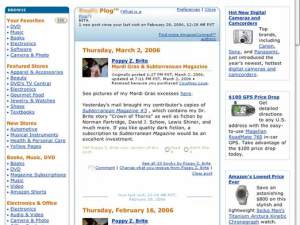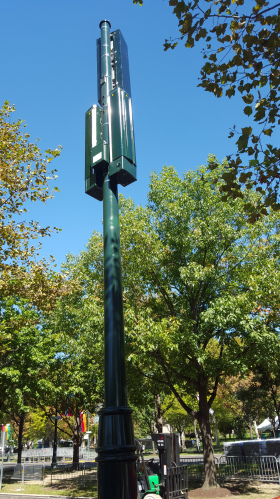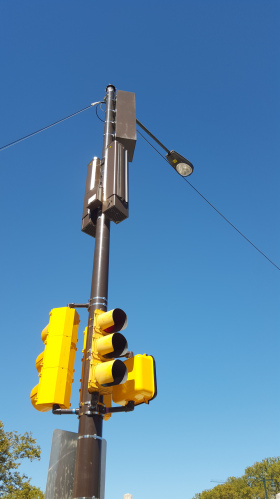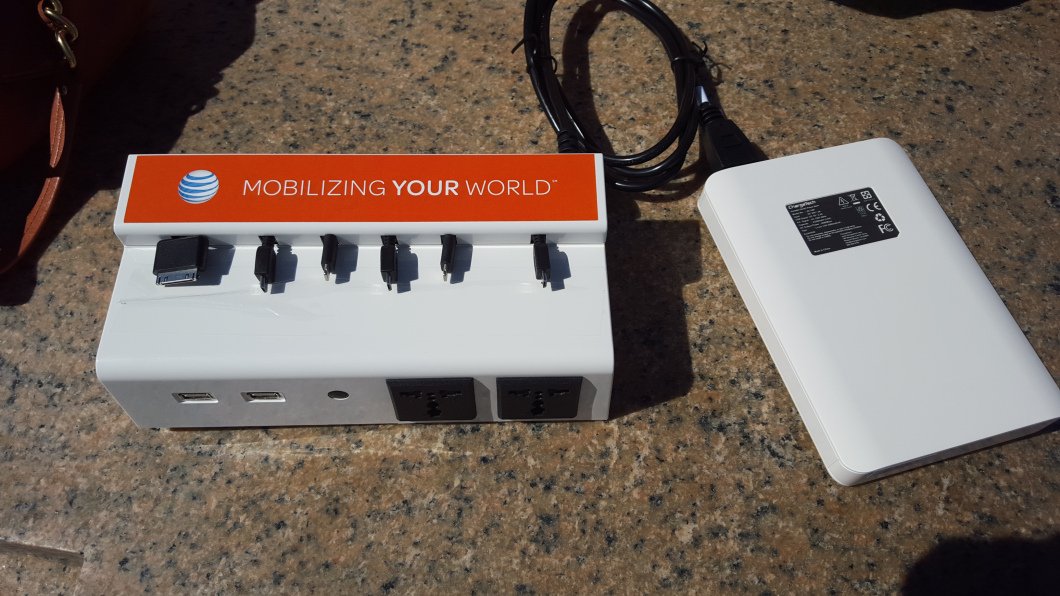How Wireless Carriers Are Prepping To Handle Texts, Tweets & Data Of 1M Pope Watchers Image courtesy of Consumerist
The last time a pontiff visited Philadelphia, it was 1979 and the throng of onlookers — my family included — jostled to get photos with our film cameras (only to find out days later after getting the photos printed that all we had was a motion blur of part of Pope John Paul II’s car). It will be a very different story for the expected million people who will pack Philly’s Ben Franklin Parkway on Saturday and Sunday.
At any given moment, tens of thousands of these visitors will be texting, Tweeting, Facebooking, Periscoping, and making calls to share the experience with others. The big question is: Will these messages, updates, photos, and videos get through?
All four of the national carriers — AT&T, Sprint, T-Mobile, and Verizon — say they have made some degree of investment in the hope of keeping their customers sufficiently connected during the papal visit.
Getting The Lay of the Land
So on Wednesday afternoon, with preparations for this weekend’s festivities in full swing, I made the quick trip up to the massive event site, which extends all the way from the famous Art Museum steps to City Hall, with dozens of huge video screens being erected.
On this map from PhillyPopeMap.com, the highest crowd density is expected to be the area shaded in red, stretching from Logan Square all the way to the stage:
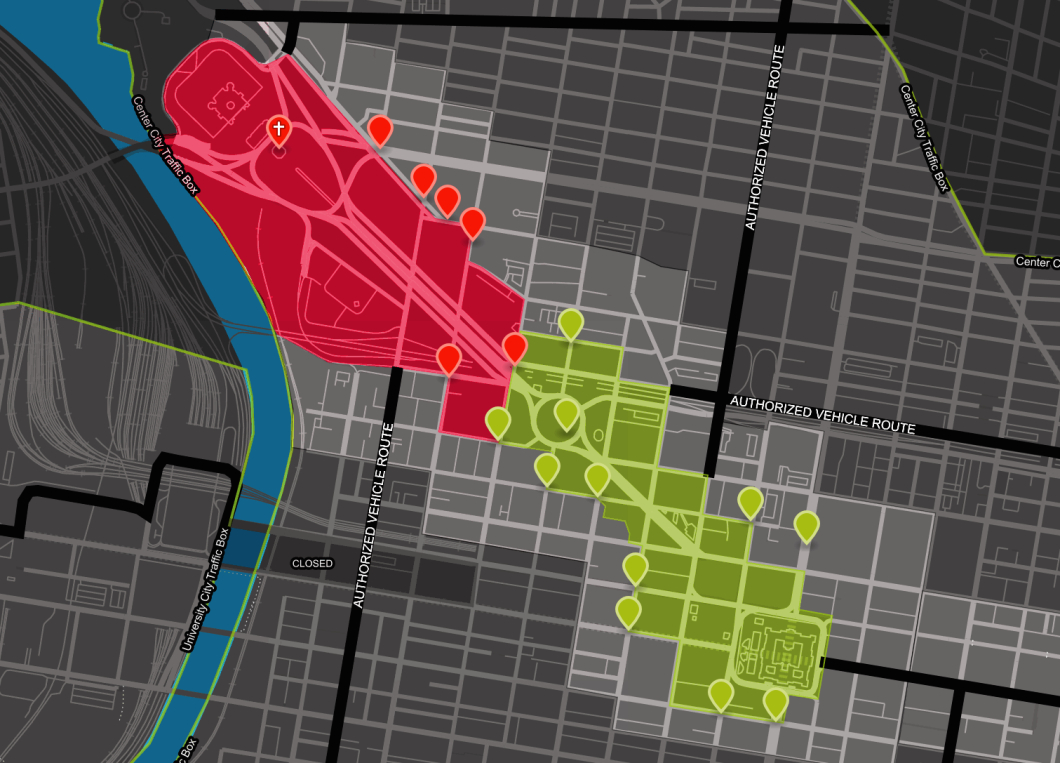
(via PhillyPopeMap)
And that’s where people who know where to look might spot the first evidence of the temporary improvements made to service in the area — an AT&T Cell on Wheels (CoW) tower tucked away off the northeast corner of Logan Square:
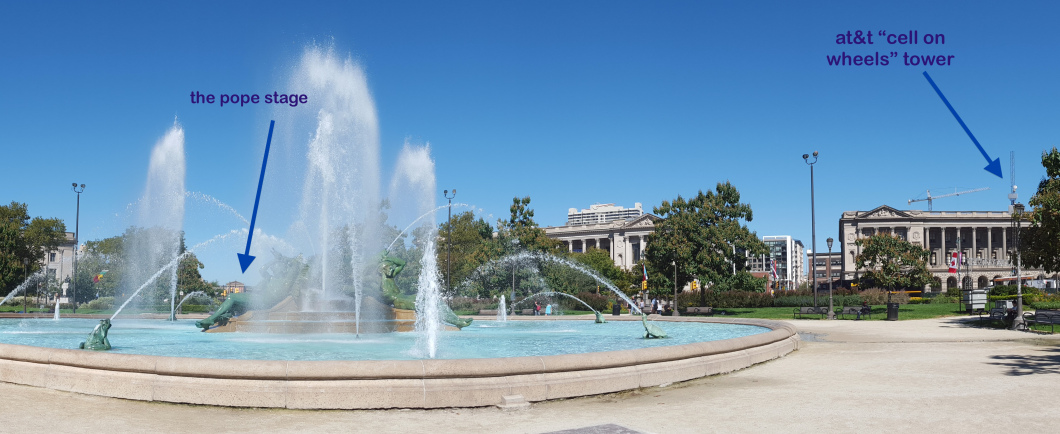
This temporary AT&T tower is being used to provide bookend wireless service for the most densely packed part of the crowd.
This tower, which projects an array of 10 beams to cover the back end of the throng, transmits data at 500 Mbps across the street to AT&T’s permanent rooftop setup. The company has another CoW serving the crowds closer to the stage. It hopes that by providing these temporary bookends, they’ll be able to handle the huge amount of data from onlookers sharing their images and thoughts with the rest of the world.
And AT&T is not the only one amping things up for the weekend. Up and down the side of the Parkway, I spotted CoWs and CoLTs (cell on light trucks) from other wireless providers, all hoping the added capacity will keep customers satisfied:
While some of what’s been deployed for the pope’s visit is understandably temporary — after all, the Parkway doesn’t always need cell coverage for several hundred thousand people — the wireless providers have also made permanent upgrades that will hopefully continue to benefit residents of Philadelphia long after the weekend has passed.
If visitors look up at the light poles and traffic lights along the Parkway, they might see an odd three-box structure attached near the top. There are around three dozen such setups scattered throughout the event area, comprising what’s known as an outdoor distributed antenna system (oDAS).
The oDAS on the Parkway is a multi-carrier system, meaning each of those pole-hugging devices contains antennae for more than one wireless provider. Though there may be multiple carriers per pole, the services operate independently so congestion on one company’s antenna doesn’t impact anyone else’s.
We know that AT&T, T-Mobile, and Verizon are taking advantage of the new antenna system. And Sprint recently published a blog post mentioning “permanent capacity upgrades” in the area, which means they are either also part of the oDAS or built their own.
AT&T claims that it has already invested around $23 million in preparation for the papal visit, but says that much of that has gone to 200 upgrades to the provider’s LTE system in the city. According to a rep for AT&T, it’s quadrupled LTE capacity in Philly as a result.
The carrier will also be offering free charging stations at the event and at a handful of SEPTA train stops, so people worried about their phone battery dying will be able to juice up.
AT&T estimates that these portable charging stations charge phones at a rate of about 1% per minute, so after 10-15 minutes most people would have enough battery power to cover their trip home.
Not to be outdone, Verizon puts a $24 million figure on its pope-related investment, and it too has quadrupled capacity in the Center City area.
In terms of things people can do to minimize congestion on cell networks, reps for AT&T and T-Mobile suggest that if a visitor to this weekend’s event is able to access one of their public WiFi spots for subscribers, that this might be the best way to avoid the logjam of people trying to access cellular data. They also point out that texting is the most efficient way to communicate on a congested network.
And so back to the big question: Will all the millions of dollars spent on temporary and permanent upgrades work?
All of the providers seem reasonably positive about their ability to handle the excess data, but that doesn’t mean it’s going to be hiccup-free.
In this video from Verizon, a cell operations supervisor for the company admits that her people are “excited” but also a “bit nervous.”
Similarly, a rep for AT&T tells Consumerist that there’s no denying that providing coverage for this many people all at once is a challenge, but says the company is doing everything it can to provide its users with the access they’ll need to enjoy and share the event.
One anonymous wireless company rep confessed that his ideal outcome for this weekend would be for no one to even notice that their service was any different than it is normally.
“In this business, if customers are talking about your data speeds or network availability, it’s usually not because they’re fans,” he explains. “So sometimes, no news is the best news.”
Want more consumer news? Visit our parent organization, Consumer Reports, for the latest on scams, recalls, and other consumer issues.


